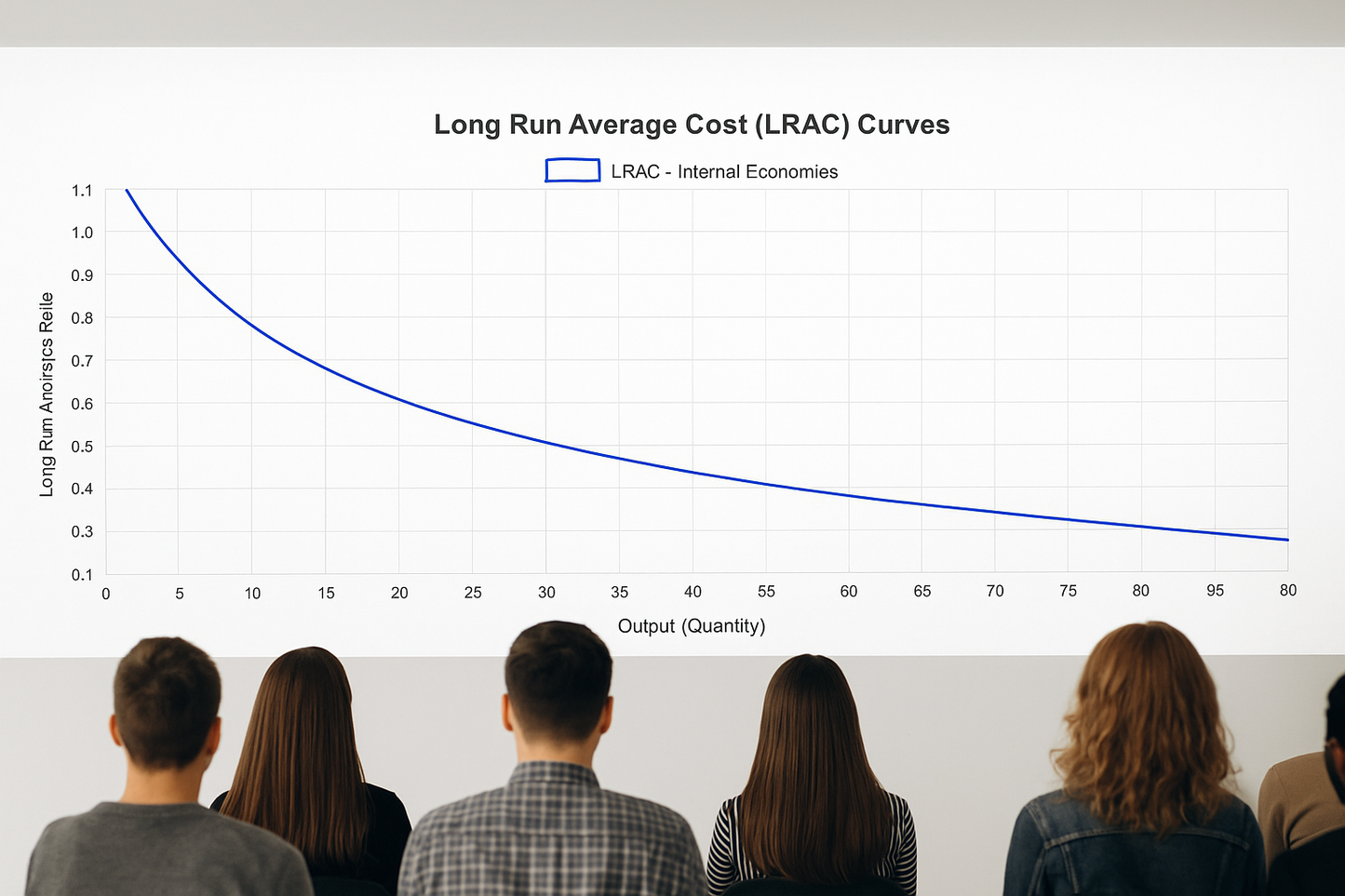BIZ-OMICS
Economics: Economies and Diseconomies of Scale Simulator
Economics: Economies and Diseconomies of Scale Simulator
Couldn't load pickup availability
An interactive collection of classroom-ready tools that let students explore how firm size affects efficiency, cost, and performance. Together, the simulators bring the entire long-run cost curve to life — from economies and productive efficiency to the onset of diseconomies — turning abstract theory into a dynamic, visual learning experience.
Economies of Scale Simulator
The Economies of Scale Business Simulator brings textbook theory to life through immersive business scenarios that show how growth drives efficiency. Students choose from six strategies—technical, managerial, financial, purchasing, risk-bearing, and marketing—and watch small firms face off against industry giants in dynamic negotiation scenes. Each simulation reveals how scale reduces costs, improves credit access, and unlocks new advantages, all visualised through live metrics, interactive sliders, and performance dashboards. Users can adjust production volume, staff size, or marketing budget and instantly see the economic impact on cost per unit, utilization, or returns. Designed with a smooth, gradient interface and realistic corporate dialogue, the simulator turns abstract ideas like “bulk buying” or “financial economies” into concrete, measurable outcomes. Perfect for A-Level and university economics classrooms, it encourages experimentation and visual understanding of why bigger firms often mean lower long-run costs.
Diseconomies of Scale Simulator
The Diseconomies of Scale Simulator flips the efficiency story on its head, showing what happens when firms grow too big for their own good. Through interactive scenarios and data-driven charts, students witness coordination problems, bureaucracy, demotivation, and rising costs creep into oversized organisations. Sliders allow users to adjust company size, management layers, and complexity to explore how inefficiencies emerge beyond the optimal scale. Realistic animations and responsive feedback demonstrate how average costs start to rise after reaching the minimum efficient scale, linking directly to the U-shaped LRAC curve. The simulation captures everything from sluggish communication chains to higher supervision costs, helping learners connect micro-level management issues to macro-level cost behaviour. Sleek, clear, and academically grounded, this simulator is ideal for lessons on productive efficiency, scale limits, and the dangers of overexpansion in the long run.
Economies of Scale Visualiser
The Economies of Scale Visualiser serves as the conceptual anchor of the bundle — a chart-driven, interactive tool that maps the full long-run average cost (LRAC) curve in motion. With a click, students can toggle between internal economies, external economies, constant returns, and diseconomies of scale, each rendered through animated cost curves powered by Chart.js. Clear legends, live updates, and explanation panels guide learners through the logic behind falling, flat, and rising cost segments. Beyond visuals, the Visualiser integrates rich A-Level theory tabs that break down short-run versus long-run distinctions, the law of diminishing returns, and the envelope relationship between SRAC and LRAC. Users can see how factors like purchasing power or coordination problems translate directly into cost behaviour, bridging diagrams with real-world reasoning. Its minimalist interface, dynamic graphs, and instant feedback make it both a study aid and a teaching centrepiece for exploring the long-run cost structure of firms.
Share


